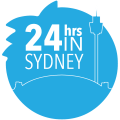WHEN SYDNEY RAN DRY

Busby’s Bore, which runs under Sydney’s streets between Centennial Park and Hyde Park remains as one of the most impressive pieces of convict-built infrastructure in Sydney.
In the mid-1820s, Sydney was in the midst of a water crisis. In the space of 30 years, the European settlers had managed to make their main fresh water source, the Tank Stream, undrinkable through its use as a sewer, an outdoor bathing system and a livestock watering place. Residents had been digging wells for a number of years to supplement the fresh water the stream once provided, but drought years and an increasing population meant another source was desperately needed.
In 1824, John Busby arrived in Sydney. Seeing the problem, he suggested to Governor Darling that a tunnel or bore could be built linking the fresh water Lachlan Swamps in the east to the city, where the water could be stored in a large reservoir. Busby was then commissioned to build the tunnel in 1825 and work commenced in 1827.
Utilizing the convict labour, the bore was commended at the city exit site near the present-day corner of College and Liverpool/Oxford Streets. The procedure involved drilling shafts down to the required depth along the course and then tunneling through to each shaft, before drilling the next series and continuing. For a decade the convict gangs worked under the streets cutting the tunnel with hand tools through the sandstone. They would shore up the sides and roof with Pyrmont sandstone when it moved into the sand dunes of east Sydney.
Water began to flow from 1830, with adequate water to provide drinking water to the public. This was delivered by an elevated pipe line on a trestle erected in Hyde Park. In 1833 pipes were extended to Circular Quay and water sold to visiting ships there.
When it was finished, the bore brought between 1,360,000 and 1,818,000 litres per day. Water was collected in water carts at the pipe end and sold across the city. In 1844, reticulation pipes were linked delivering water direct to about 70 homes in the city, with more connected in the following years. Fresh water carried to homes and pubs, changed domestic life in Sydney at the time. Public water fountains were also set up throughout the city.
The bore was supplement in 1854 with a small pumping station near Centennial Park to push water through it and remained as the sole source of fresh water to Sydney until 1858. It continued to supply water to the city, Woolloomooloo and other inner suburbs into the 1880s and was still in operation and used in the Botanic Gardens into the twentieth century.
Although long closed off it is still all there. There are 28 shafts that remain under the surface of Oxford Street, through Victoria Barracks, at the back of Moore Park and into Centennial Park, with the stone lined tunnel a hidden reminder of the convict workforce that built the city we live in. Next time you are in Hyde Park, discover the Busby fountain, still bringing water into the city still. #yougottalovesydney
IMAGE CREDIT: City of Sydney Archives
